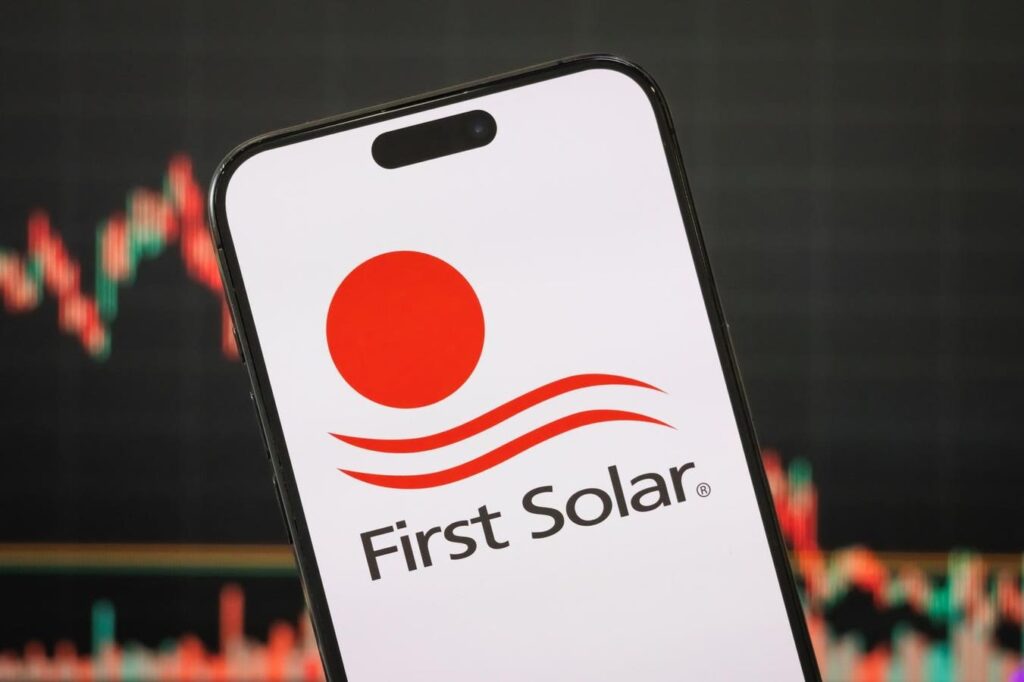First Solar’s stock (NASDAQ: FSLR) has experienced a significant decline — down almost 50% from its peak of around $300 last summer to approximately $150 today. This kind of decline prompts an important question: Is this a rare buying opportunity — or could the stock decrease even more? For instance, to $100 or less?
Why Did First Solar Fall So Much?
FSLR’s earnings for the last twelve months stand at about $11.80 per share, indicating a P/E of close to 13x following the drop— which doesn’t seem expensive at first glance. However, this assumes that earnings remain stable or increase. And that’s exactly what is uncertain at this moment. Margins are facing pressure. A year ago, FSLR’s net margins were 30%. Recently, they’ve dipped below 25%, with the potential for further decline as competition in the solar industry intensifies — particularly from Chinese manufacturers whose products are saturating global markets at significantly low prices. Additionally, revenue growth has decelerated. After two years of over 25% growth, the current guidance now indicates single-digit top-line growth through 2026. That’s a substantial adjustment — and investors have taken note.
What If Things Get Worse?
Let’s consider a pessimistic scenario. Suppose FSLR’s revenues decrease by 20% over the next 2 years, as project delays, declining panel ASPs (average selling prices), and weak U.S. utility demand collectively harm revenues. Add in margin compression — reducing net margins from 25% to around 20% — and earnings could decrease from $11.80 today to approximately $5.00 by the end of 2026. Such an EPS drop — nearly 60% — would be detrimental. If investors also conclude that solar growth is decelerating, and the P/E ratio contracts from 13x to, say, 10x, we could then see a stock price nearing $55. That represents more than 65% downside from current levels.
But Could It Rebound?
Absolutely. This is First Solar, not just any unprofitable speculative venture. FSLR is the foremost U.S.-based solar panel manufacturer, benefiting from significant IRA-driven advantages. It has secured long-term supply contracts with U.S. utilities. Furthermore, it gains from the government’s push for domestic manufacturing and import duties on foreign panels. In a more optimistic scenario, revenues remain stable or grow slightly — perhaps 5% annually — while margins retain their current levels. In this case, earnings could stabilize around $8/share, and the stock might revert to trading at 22-25x earnings, suggesting a fair value of $175–$200 — with the potential for some upside from this point. A more bullish outlook — driven by a Fed rate cut cycle that revitalizes large-scale solar projects and demand linked to housing — could elevate earnings back to $10/share by 2026, with a 25x multiple indicating a $250 stock.
Bottom Line?
FSLR at $150 is not exceptionally cheap — especially with solar demand under strain and earnings facing risk. However, it’s not excessively overpriced either. If the solar cycle improves and margins stabilize, this could represent a strong entry point. Conversely, if pricing power diminishes and demand continues to slow, the stock may have additional room to decline — potentially heading toward the $100 mark. Either way, it’s a classic instance of risk-reward. A high-quality business. Significant tailwinds. Yet also some genuine near-term challenges.
Investing in a single stock like FSLR can carry risks. On the other hand, the Trefis High Quality (HQ) Portfolio, which consists of 30 stocks, has demonstrated a history of comfortably outperforming the S&P 500over the past four years. What accounts for this? As a collective, HQ Portfolio stocks have produced superior returns with reduced risk compared to the benchmark index, leading to a less turbulent experience, as shown in HQ Portfolio performance metrics.
Read the full article here
















